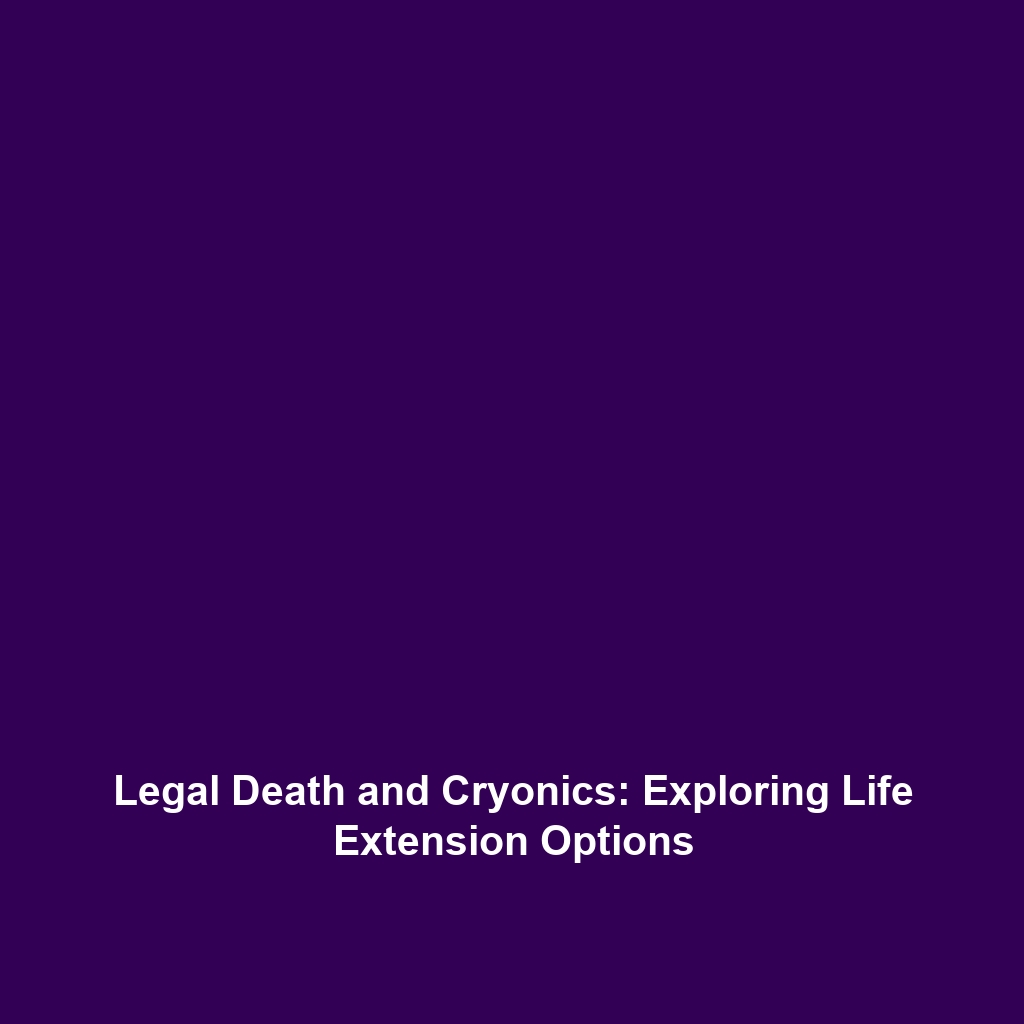Legal Death and Cryonics: Implications for Life Extension
Introduction
The concept of Legal Death plays a pivotal role in the realm of Cryonics and Life Extension. Legal death signifies the official recognition of a person’s death, which lays the groundwork for potential cryopreservation. This process involves cooling a body to cryogenic temperatures in an effort to halt decay, with the hope of future revival through advancements in medical technology. Understanding the intersection between legal definitions and cryonic practices is crucial for anyone interested in the future of human longevity and the science of cryonics.
Key Concepts
Understanding Legal Death
Legal death is defined by the cessation of biological functions that sustain a living organism. In many jurisdictions, it is established through medical assessments, often involving neurological and physiological determinations. Once legally dead, individuals may theoretically be eligible for cryopreservation.
Cryonics Fundamentals
Cryonics involves lowering the temperature of a deceased individual’s body to a point where metabolic and chemical processes virtually pause. This concept relies on several scientific principles, including:
- Cryoprotectants: Chemicals used to prevent ice formation in cells.
- Vitrification: A process that turns biological tissues into a glass-like state without crystallization.
- Future Revival Technologies: Hypothetical advancements in medical science that could lead to the resurrection of cryopreserved individuals.
Applications and Real-World Uses
Understanding how legal death is intertwined with cryonics has real-world implications for the field of Cryonics and Life Extension. Some key applications include:
- Preservation of Organics: The scientific potential for preserving organs for future transplants.
- Research on Cryobiology: Studying the effects of low temperatures on biological organisms
- Prolonged Life Research: Investigating how cryonics can contribute to life extension practices.
Current Challenges
Despite the promising foundations of legal death and cryonics, several challenges persist:
- Legal and Ethical Boundaries: Distinct definitions of death can complicate the cryopreservation process.
- Scientific Limitations: Many aspects of revival remain purely theoretical.
- Public Perception: Misunderstandings surrounding legal death and cryonics can hinder research funding and support.
Future Research and Innovations
As interest in the preservation of human life grows, several innovations are on the horizon:
- Next-Generation Cryoprotectants: Developing substances that minimize damage during the freezing process.
- Advanced Imaging Techniques: Innovations in imaging could allow for better understanding and revival potential.
- Legislative Advances: Changes in law could enhance the legal framework for cryonics.
Conclusion
In conclusion, the relationship between legal death and cryonics is vital for the future of Cryonics and Life Extension. As our understanding of these processes enhances, so too does the potential for revolutionary changes in how we view life and death. For more in-depth knowledge, visit our articles on cryoprotectants and vitrification processes.
